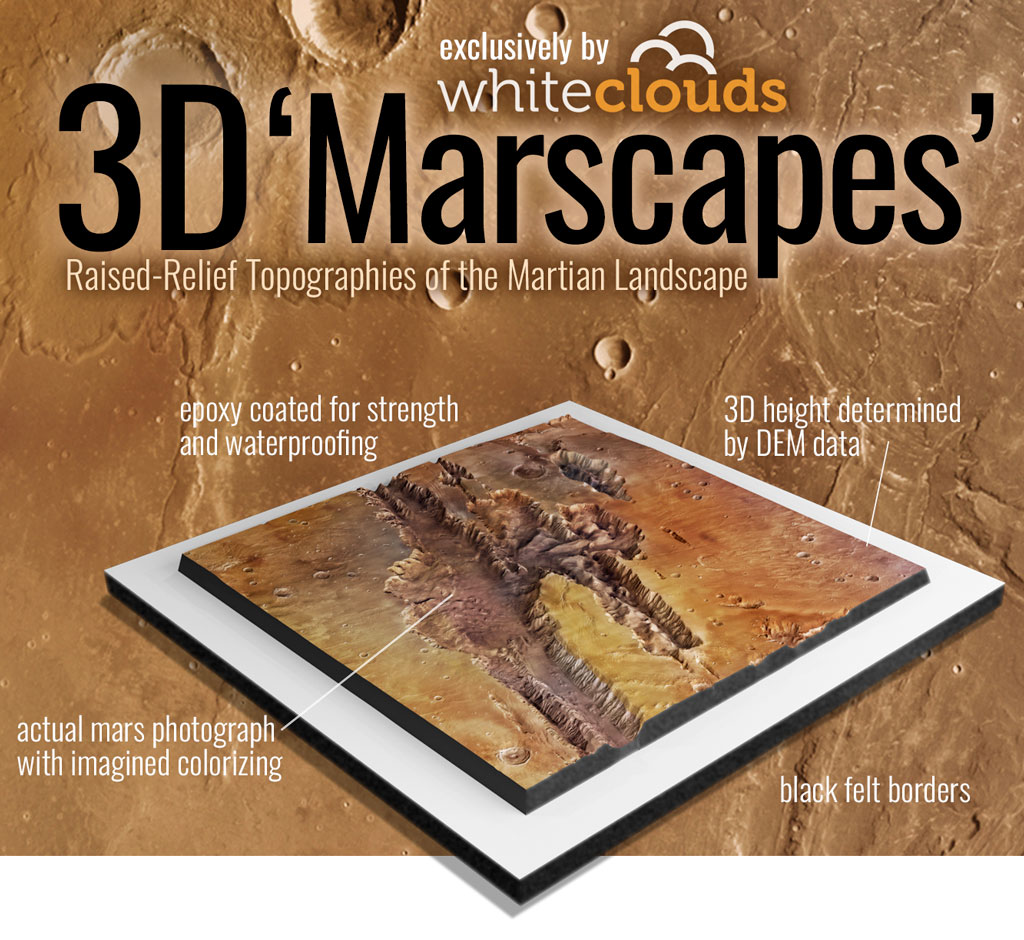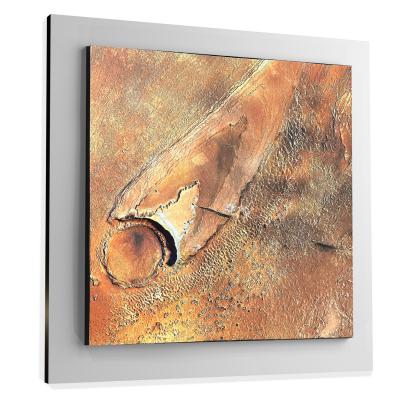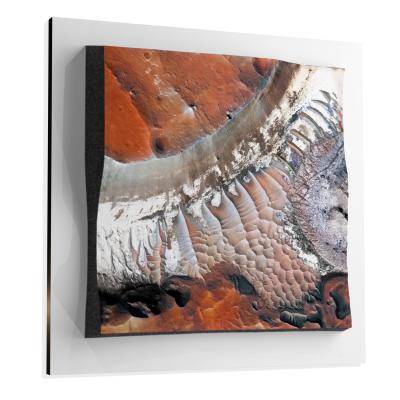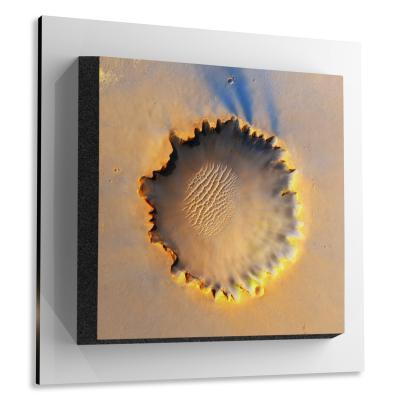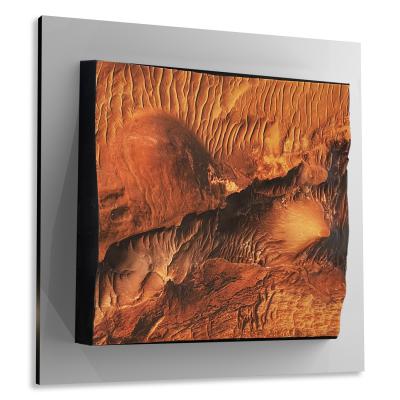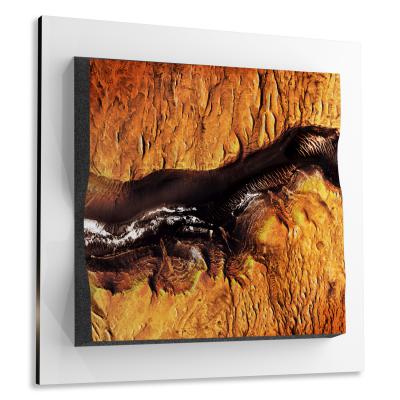Hellas Basin
Hellas Basin
We Build Custom 8K Mars Canvas Prints of Hellas Basin
Did you know we make
custom
8K Mars Canvas Prints

and
3D Marscapes

Hellas Basin
Hellas Basin represents one of the most intriguing and significant geological features on the Martian surface. As the largest impact crater not only on Mars but also within our solar system, Hellas Basin holds an unparalleled scientific value for unraveling the mysteries of Mars’ complex geological and climatic history. This comprehensive report aims to delve into the various aspects that make Hellas Basin an extraordinary subject for planetary science, covering its geographical location, geological composition, significant discoveries, scientific missions, and geomorphological features. By synthesizing these diverse topics, we can obtain a clearer understanding of why Hellas Basin is a cornerstone in Martian research.
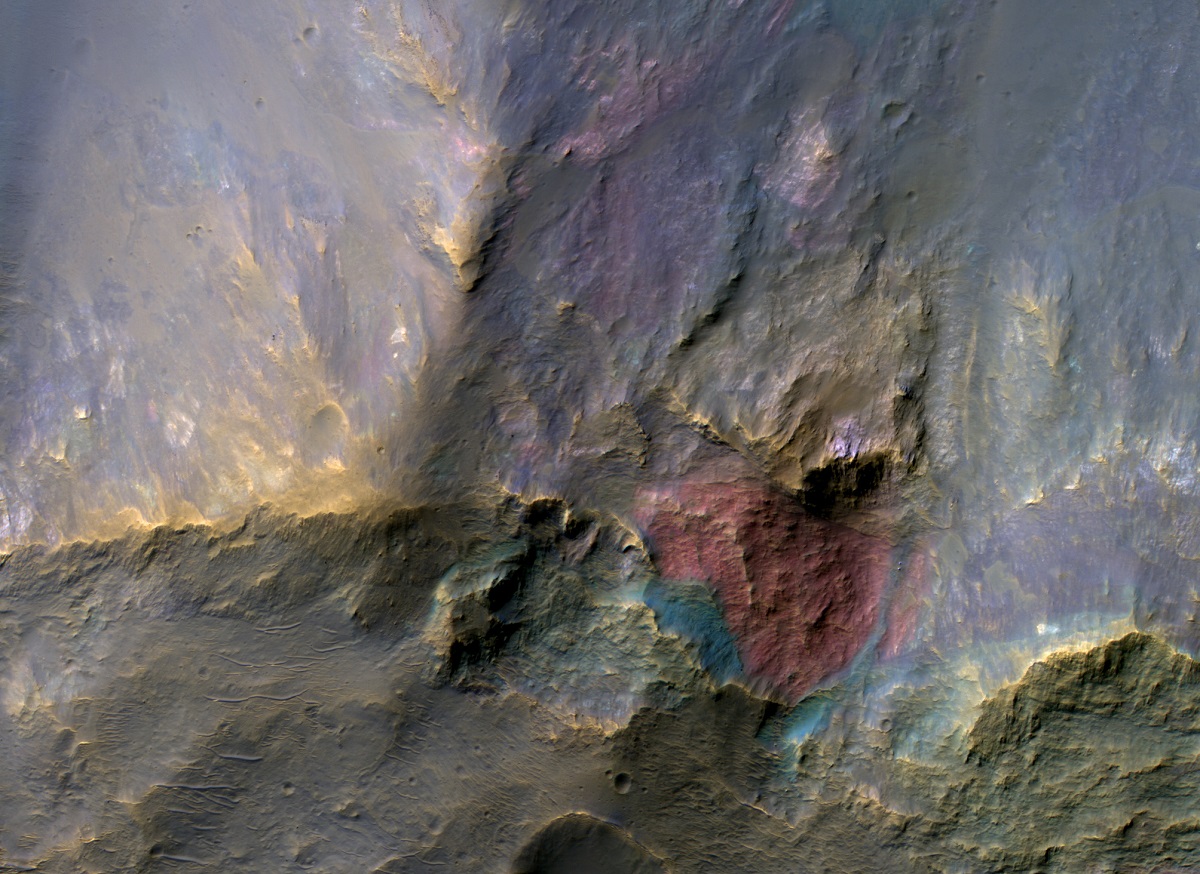 Crater Northeast of the Hellas Impact Basin
Crater Northeast of the Hellas Impact Basin
Geographical Location
Situated in the southern highlands of Mars, Hellas Basin stretches across a colossal 2,300 kilometers (about 1,400 miles) in diameter and plunges down to depths of nearly 9 kilometers (5.6 miles), making it the deepest impact crater on Mars. Geographically, it lies roughly between latitudes 35°S and 70°S and longitudes 40°E and 105°E. Its sheer size and unique location make Hellas Basin a massive low-pressure system, contributing to interesting meteorological phenomena like dust storms and clouds. The basin is surrounded by a ring of mountains and valleys, adding to its geological diversity. Its geographical position between ancient highlands and more contemporary features makes it a fascinating locale for understanding transitional planetary phenomena.
Advertisement
Sample Marscapes
Geological Composition
The geological constitution of Hellas Basin is astoundingly intricate and serves as a veritable case study for Martian geology. The floor of the basin is predominantly covered with a dense layer of fine-grained, sedimentary deposits, which can extend to considerable depths. These deposits have been speculated to originate from multiple sources including aqueous (water-based) and aeolian (wind-based) mechanisms. Intriguingly, these sedimentary strata exhibit a mix of lithologies, indicating different epochs of sedimentation. The presence of mineralogical components such as clays, sulfates, carbonates, and even signs of hydrated salts strongly implies a history rich in liquid water activities.
The walls and perimeter of Hellas Basin are mainly comprised of igneous rocks, specifically basaltic in composition. This suggests a history of volcanic activity, potentially subsequent to the basin-forming impact event, enriching the geological tapestry of the area. High-resolution spectroscopic studies have been key in detecting a bewildering mix of minerals, including but not limited to, anorthosites, various forms of pyroxenes, and olivines, amplifying our understanding of the basin’s complex geological makeup and its formation mechanisms.
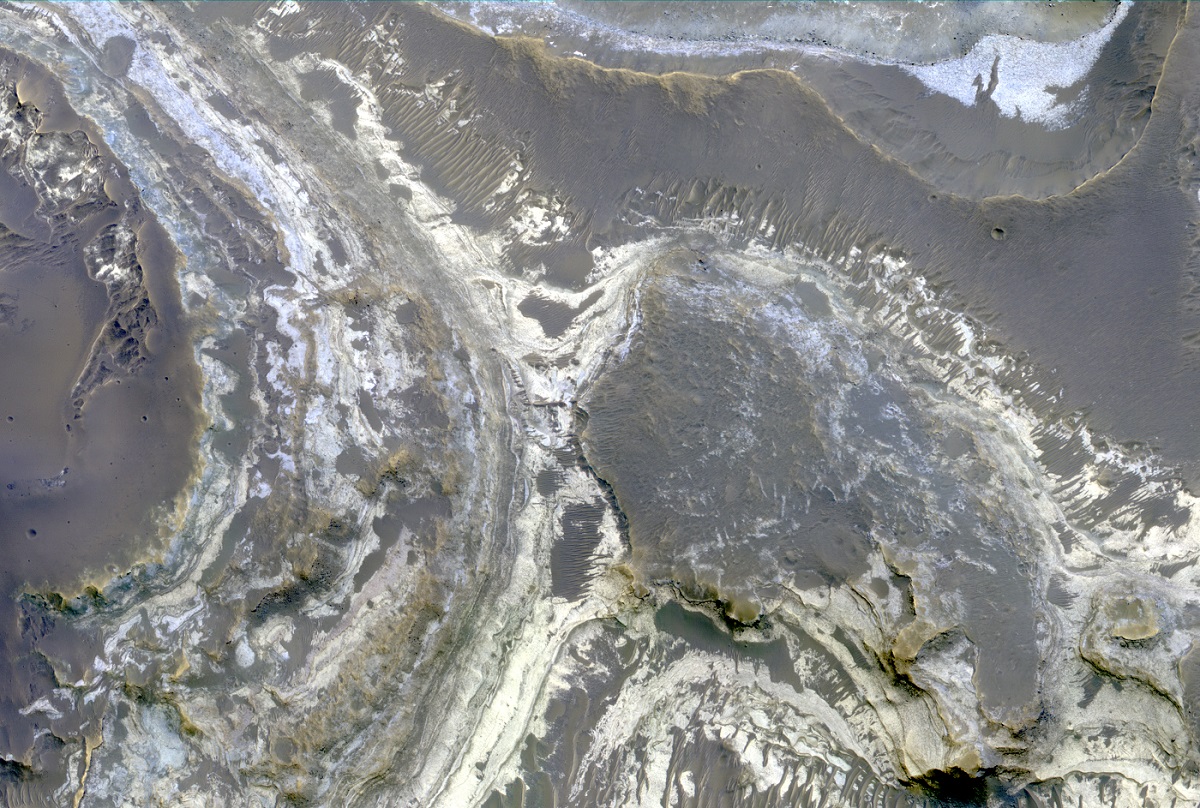 Colorful Sediments Near Hellas Basin
Colorful Sediments Near Hellas Basin
Significant Discoveries
Evidence of Ancient Oceans and Glaciers
One of the most astonishing discoveries regarding Hellas Basin has been the identification of geomorphological features that strongly indicate the presence of ancient water bodies. Cutting-edge high-resolution imaging has depicted what appears to be ancient shorelines, well-preserved delta formations, and even landforms that bear a striking resemblance to glaciated terrains. These exceptional findings not only illuminate Mars’ hydrological past but also present possible habitats where ancient life forms might have existed.
Atmospheric Dynamics
The vast and profound depth of Hellas Basin exerts a considerable influence on Martian atmospheric conditions. Detailed meteorological observations have recorded unconventional atmospheric phenomena, including localized dust storms that not only originate within the basin but sometimes burgeon into expansive, regional dust storms. Such phenomena are a testament to the basin’s unique interaction with the Martian atmosphere and offer a window into the planet’s complex climatic systems.
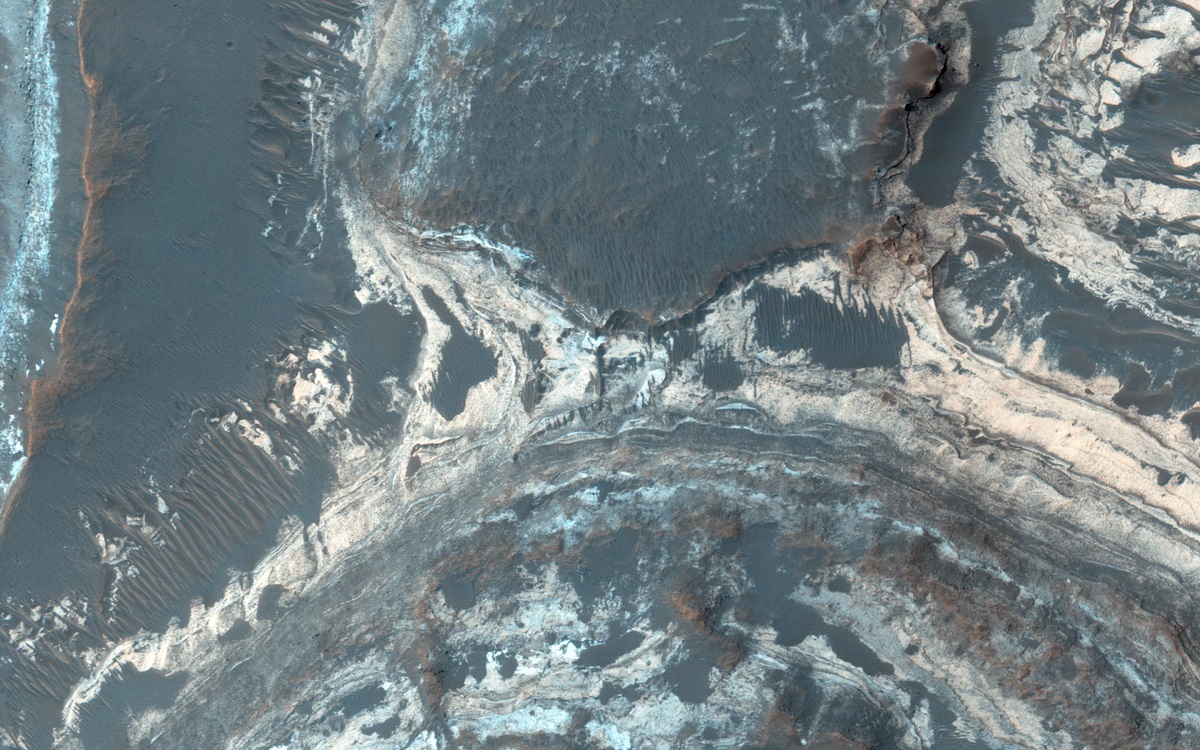 Colorful Sediments Near Hellas Basin
Colorful Sediments Near Hellas Basin
Scientific Missions
Hellas Basin has been an object of extensive study and has figured prominently in a multitude of scientific missions orbiting Mars. Although no lander or rover missions have directly explored Hellas Basin, a plethora of valuable data has been harvested from orbiting spacecraft. Prominent among these are NASA’s Mars Reconnaissance Orbiter (MRO) and the European Space Agency’s Mars Express mission. Both have utilized advanced instrumentation like high-resolution cameras and spectrometers to capture detailed images and compositional data. This voluminous set of information has been instrumental in answering critical questions regarding the geological, climatic, and potentially even biological significance of Hellas Basin.
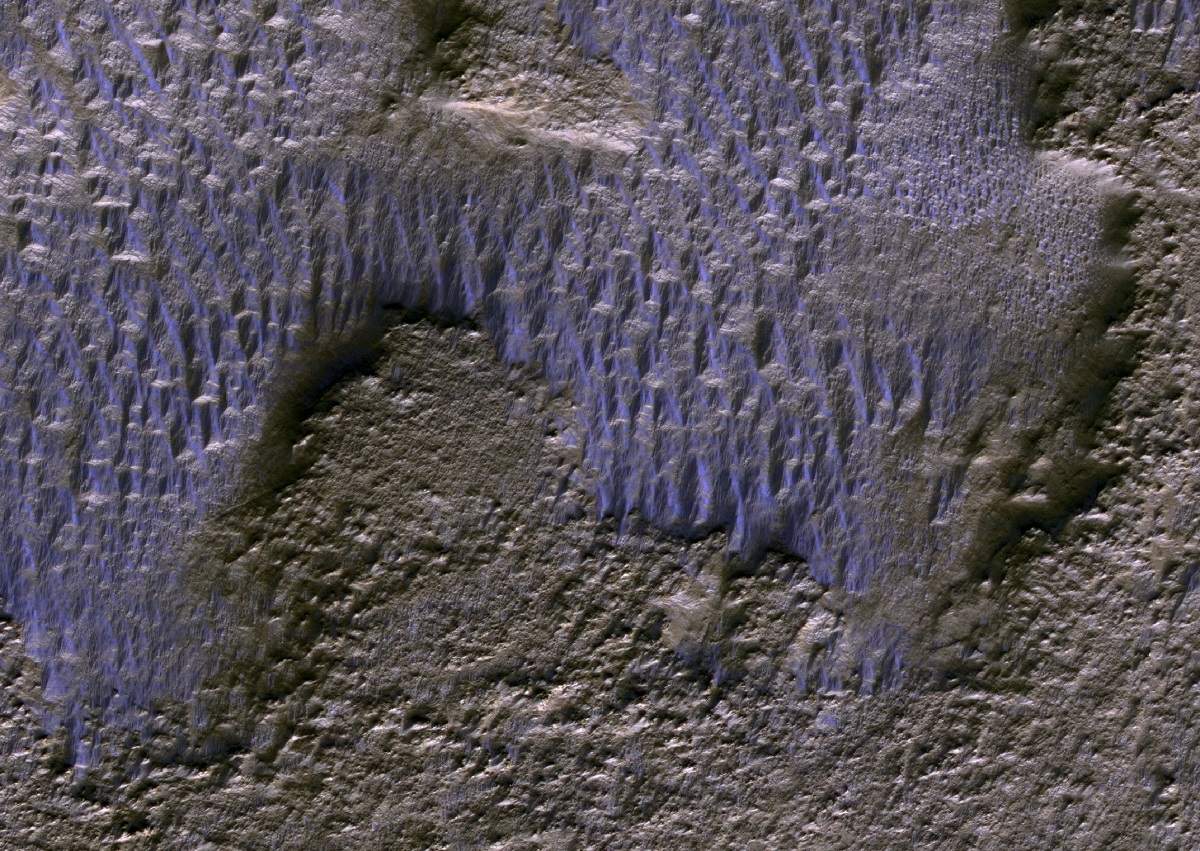 Fall in the Hellas Basin
Fall in the Hellas Basin
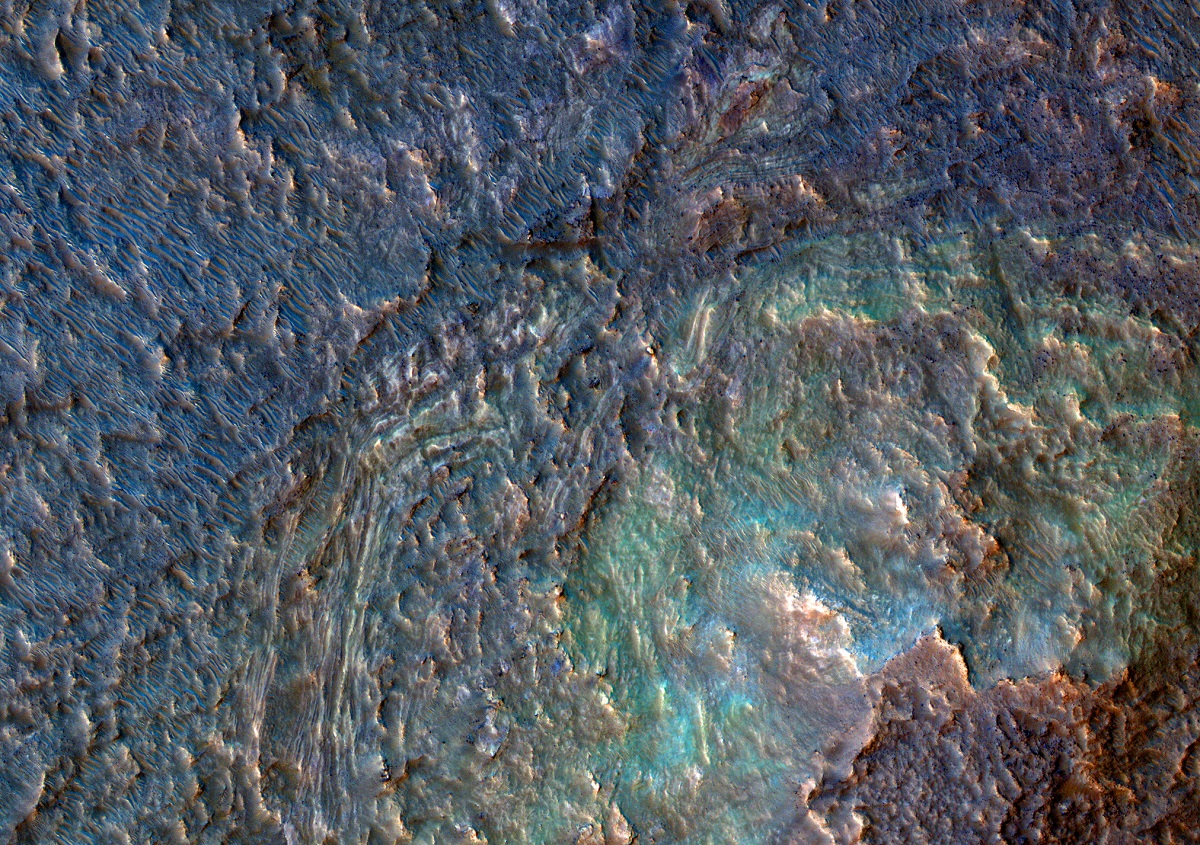 The Crazy Floor of the Hellas Basin
The Crazy Floor of the Hellas Basin
Geomorphological Features
Hellas Basin presents an exceptionally diversified geomorphological landscape that offers valuable clues into its varied and violent geological past. The most striking feature is undoubtedly the basin itself, a massive impact crater that ranks as one of the largest in the solar system. But beyond the basin, the surrounding terrains exhibit a host of other captivating geomorphological elements. Vast alluvial fans signal past episodes of fluvial (river-based) activity, while sprawling dune fields indicate ongoing aeolian processes. The concentric and radial ring structures around the basin provide clear evidence of tectonic adjustments and volcanic activities post-impact. These features collectively point to a multifaceted and dynamic geological history, which makes Hellas Basin a subject of unending scientific curiosity.
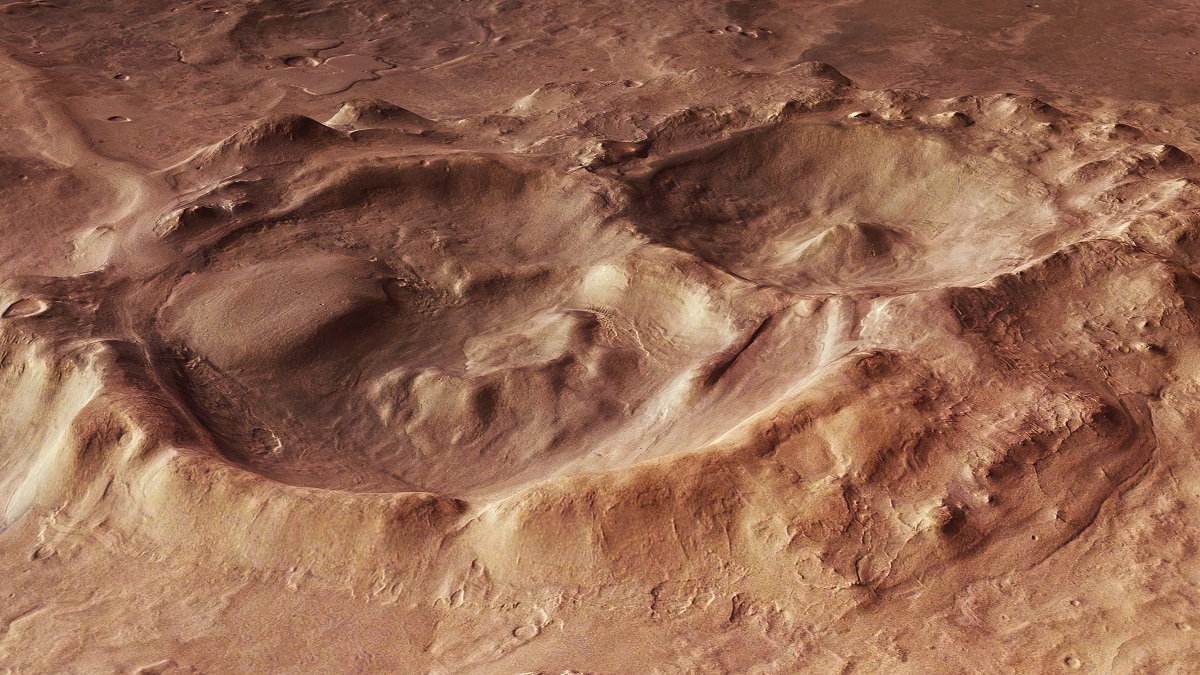 Caves within Hellas Basin
Caves within Hellas Basin
Hellas Basin stands as a monumental confirmation of Mars’ dynamic geological and climatic past. Its massive size, depth, and diverse geological composition make it a focal point for scientific research aimed at understanding Mars and, by extension, the formation and evolution of planetary bodies in our solar system. Significant discoveries in the basin have already provided invaluable insights into the history of water and atmosphere on Mars, and ongoing missions continue to reveal more about this fascinating feature. As we continue to probe Hellas Basin’s myriad mysteries, it remains a cornerstone in our quest to unravel the enigmatic past of the Red Planet.
By considering Hellas Basin in all its complexity, we are not merely studying an isolated feature on a distant planet. We are gaining insights into the very processes that have shaped planets and moons throughout our solar system, offering clues that may even shed light on the origins and possibilities of life elsewhere in the universe.
Check out our 3D Mars Learning Center for more information on Mars and Hellas Basin. You can also learn more at: NASA Mars Exploration.
More About Mars
Contact us today to learn more about our 3D services and how we can help you achieve your goals.
